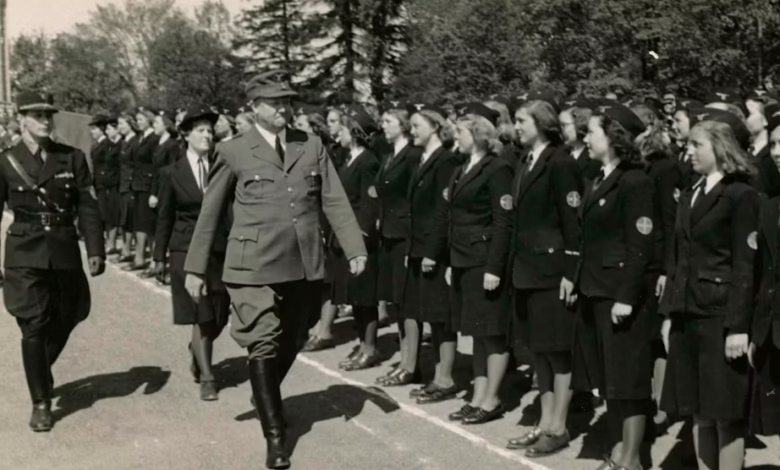Fascisterne Understanding the Resurgence of Extremist Ideologies

Introduction to Modern Fascist Movements
Fascisterne (the fascists) represent a concerning resurgence of authoritarian ideologies in contemporary politics. Across Europe and North America, far-right groups have gained alarming traction by exploiting economic anxieties, cultural shifts, and nationalist sentiments. These modern movements often distance themselves from historical fascism’s overt symbolism while maintaining core tenets of xenophobia, anti-democratic values, and ultranationalism. The digital age has provided fertile ground for these ideologies to spread through coded language, online radicalization pipelines, and sophisticated social media manipulation. Understanding fascisterne requires examining their evolving tactics, recruitment strategies, and the socioeconomic conditions enabling their growth in what many considered a post-fascist era.
Historical Roots and Contemporary Adaptations
Modern fascisterne movements maintain disturbing connections to 20th century fascism while adapting to current political landscapes. Like their predecessors, they promote:
-
Hyper-nationalist narratives
-
Scapegoating of minority groups
-
Contempt for liberal democracy
-
Glorification of authoritarian leadership
However, today’s groups often conceal these beliefs behind rhetoric about “cultural preservation” and “economic protectionism.” The internet has enabled decentralized organization, with online forums serving as incubators for radicalization through memes, conspiracy theories, and alternative news ecosystems. Contemporary fascisterne frequently employ “stochastic terrorism” tactics—spreading incendiary rhetoric that inspires violence without direct orders—making them harder to counteract through legal channels.
Psychological and Sociological Drivers
The appeal of fascisterne ideologies stems from deep psychological needs and societal conditions:
-
Economic precarity creates fertile ground for simplistic solutions
-
Cultural displacement anxiety drives reactionary responses
-
Social media algorithms amplify outrage and division
-
Crisis of meaning in postmodern society attracts absolute ideologies
Research shows followers often exhibit:
-
High need for cognitive closure
-
Authoritarian personality traits
-
Strong in-group/out-group thinking
-
Susceptibility to conspiracy theories
These movements expertly exploit legitimate grievances about globalization, inequality, and political corruption, redirecting frustration toward vulnerable populations rather than systemic issues.
Digital Propaganda and Recruitment Tactics
Fascisterne have pioneered disturbing innovations in online radicalization:
-
Gamification: Using achievement systems for engagement
-
Irony culture: Hiding extremism behind humor
-
Alternative influencers: Creating parallel expert ecosystems
-
Multi-platform strategies: Circumventing content moderation
Their propaganda often follows a “red pill” narrative structure, presenting themselves as brave truth-tellers against a corrupt establishment. Memes and viral content serve as gateway materials, gradually introducing more extreme ideas through irony and plausible deniability.

Counterstrategies and Prevention
Effective responses to fascisterne must be multifaceted:
-
Education: Teaching media literacy and critical thinking
-
Platform accountability: Enforcing consistent content policies
-
Community resilience: Strengthening social bonds
-
Economic reforms: Addressing root causes of alienation
-
Counter-messaging: Offering compelling alternatives
Successful interventions include:
-
Germany’s Exit program for deradicalization
-
Nordic model of preventative social work
-
Platform cooperation with researchers
-
Alternative narrative campaigns
Frequently Asked Questions
Q: How do modern fascists differ from historical ones?
A: They often reject the label while maintaining core ideologies, using digital tools and coded language to avoid detection.
Q: Why are young men particularly vulnerable?
A: Factors include online alienation, masculinity crises, and algorithmic radicalization pipelines targeting disaffected youth.
Q: Can fascisterne be defeated through debate?
A: Formal debates often backfire; more effective are empathetic interventions and addressing underlying needs they exploit.
Q: How can I recognize fascist rhetoric?
A: Watch for dehumanizing language, conspiracy theories, calls for authoritarian solutions, and persecution narratives.
Q: What role does social media play?
A: Platforms’ engagement algorithms inadvertently promote extremist content through outrage optimization and recommendation systems.
Conclusion: Vigilance Against Democratic Erosion
Fascisterne represent not just a revival of old hatreds but an adaptive threat exploiting contemporary anxieties and technologies. Their growth signals deeper societal fractures that require both immediate countermeasures and long-term structural solutions. Protecting democracy demands recognizing how authoritarianism repackages itself for new generations while maintaining the same destructive essence. Through education, platform reform, community building, and addressing legitimate grievances being exploited, societies can inoculate themselves against these dangerous ideologies. The struggle against fascisterne is ultimately about defending pluralism, human dignity, and the open society itself. fascisterne